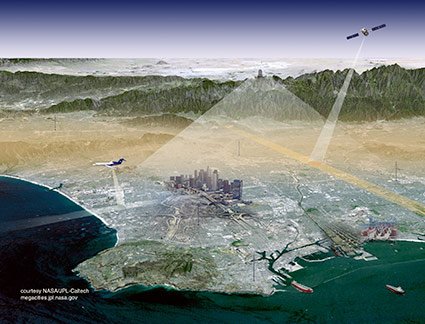NIST Megacities Carbon Project Named 'Project to Watch' by United Nations
Sept. 15, 2014

The Megacities Carbon Project was launched in 2012 to solve a pressing scientific problem: how to measure the greenhouse gases that cities produce. Urban areas generate at least 70 percent of the world’s fossil fuel carbon dioxide emissions, but gauging a city’s carbon footprint remains difficult due to the lack of effective measurement methods. The project aims to change that by developing and testing techniques for both monitoring urban areas’ emissions and determining their sources.
The large sensor networks that each city in the Megacities Carbon Project employs generate huge amounts of data that could reveal the details of the cities’ emissions patterns. It is the project’s use of this so-called “big data” that drew accolades in the Big Data Climate Challenge, hosted by U.N. Global Pulse and the U.N. Secretary General’s Climate Change Support Team. The ability to analyze big data—vast quantities of electronic information generated by many sources—has the potential to provide new insights into the workings of society, and Global Pulse is working to promote awareness of the opportunities big data presents across the U.N. system.
(Excerpt from NIST Tech Beat: September 15, 2014)